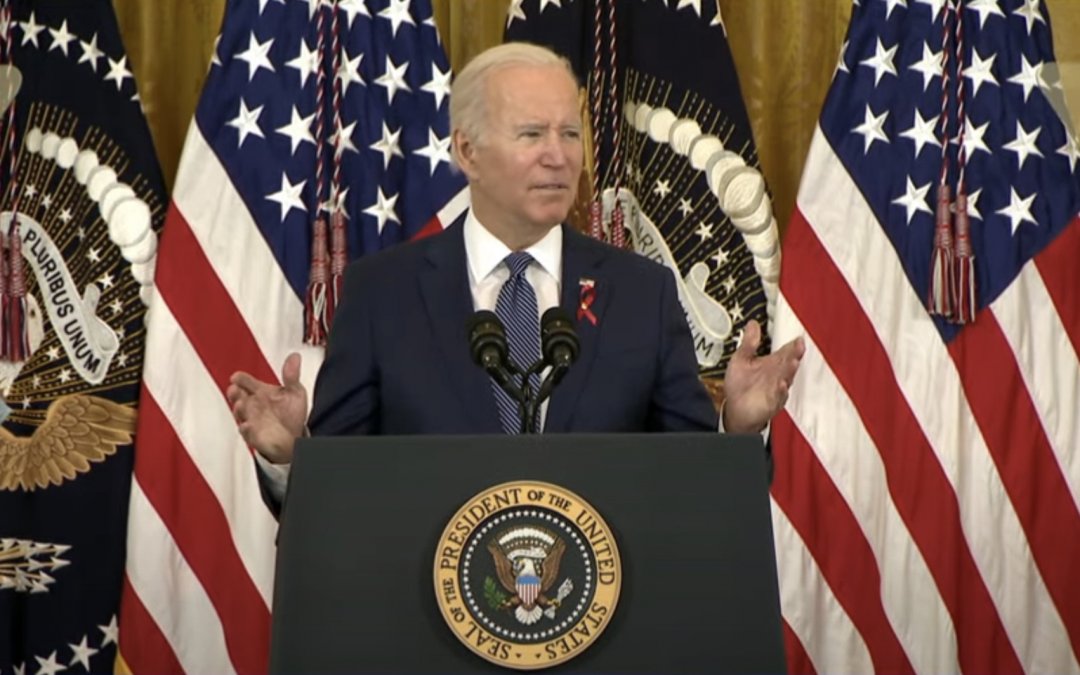WASHINGTON — In the summer of 1981, the Centers for Disease Control and Prevention reported a rare type of pneumonia afflicting five otherwise healthy gay men in Los Angeles. The cases would be identified a year later as the first AIDS diagnoses in the U.S., and the beginning of an epidemic that has since claimed the lives of more than 700,000 Americans.
Forty years later, President Joe Biden reaffirmed the United States’s commitment to end the HIV/AIDS epidemic by unveiling a new national strategy at a White House event commemorating World AIDS Day on Wednesday.
“We saw entire communities devastated by this disease, particularly among LGBTQ+ individuals and members of racial and ethnic minority groups,” Biden said. “That generation endured the brunt of this epidemic—losing friends, loved ones, family members, partners—instead of being seen and being recognized.”
The administration’s approach includes a new focus on engaging the private sector and an emphasis on addressing the social determinants of health that influence HIV risks and outcomes.
“This strategy provides a roadmap for ending the epidemic by advancing equity, expanding resources and engaging those who have lived with this struggle,” Becerra said in his opening remarks. “There are a lot of young people who don’t even remember what [the start of this epidemic] was like, but there are still people who do.”
The incident rate for HIV has steadily declined since the inaction of the Reagan administration led to a peak of approximately 130,000 new infections per year in the mid-1980s, according to the National Institutes of Health.
The Biden administration plans to reduce transmissions by 90% in the next decade—from the current HIV incidence rate of 36,000 infections per year—lowering the rate to fewer than 3,000 annual infections by 2030.
“It’s not a hyperbole to suggest that we are within striking distance of eliminating HIV transmissions,” Biden said.
More than 1.2 million people live with HIV or AIDS in the U.S., the vast majority of whom are sexual, racial and ethnic minorities. Of the gay and bisexual men who accounted for 69% of new infections in 2019—the most recent year with publicly available data—more than two-thirds were Black or Latino, the two racial groups with the highest rates of infection.
In a briefing Tuesday night, senior administration officials distinguished the updated national strategy from past efforts for its “whole-of-government approach” that “recognizes racism as a serious public health threat.” They also underlined “a new focus on people with HIV who are aging”— as new treatments and technology continue to prolong the life expectancy of HIV-positive individuals in the U.S.
Senior administration officials also highlighted Biden’s inclusion of unprecedented funding to combat the HIV epidemic in his federal budget proposal for fiscal 2022. The budget would direct $670 million to the Ending the HIV Epidemic in the U.S. initiative—a 65% increase from the current fiscal year; the program is a collaboration between federal agencies and the White House to reduce rates of HIV infections and deaths caused by AIDS.
“[The Ending the HIV Epidemic initiative] will provide additional support to the 50 jurisdictions where more than half of the country’s new HIV diagnoses occur, as well as seven states with a disproportionate occurrence of HIV in rural areas,” Health and Human Services Secretary Xavier Becerra said Wednesday before Biden’s remarks.
The U.S. spends more than $28 billion on its domestic response to HIV per year, $20 billion of which goes toward annual direct health expenditures for HIV prevention and care.
A major recipient of federal HIV spending is the Ryan White HIV/AIDS Program, which provides care and treatment services for low-income Americans with HIV. The program was first authorized in 1990 and now provides services for more than half of all Americans with HIV.


